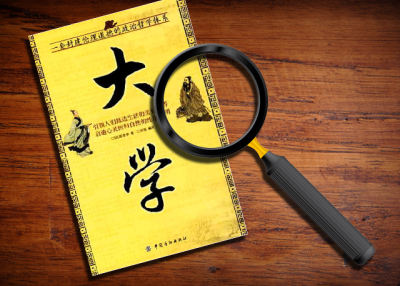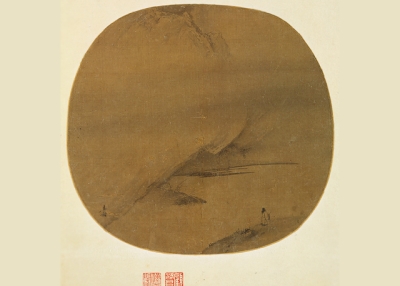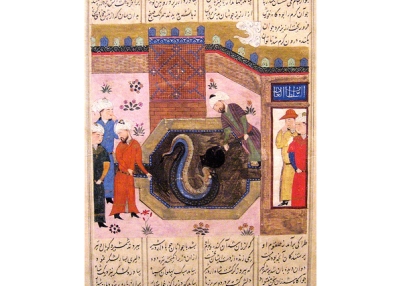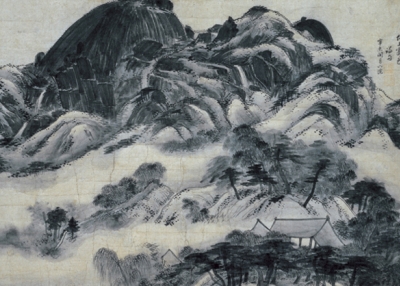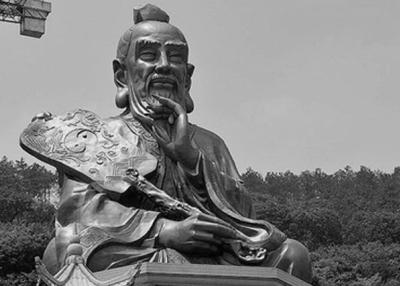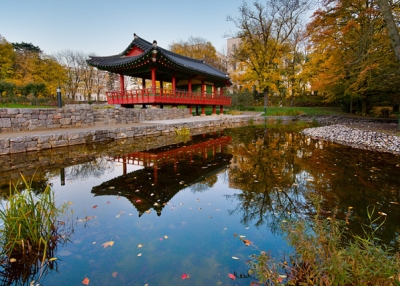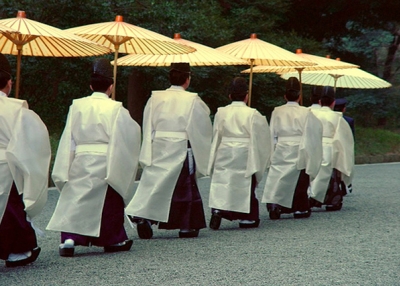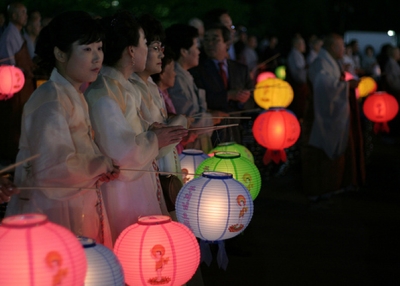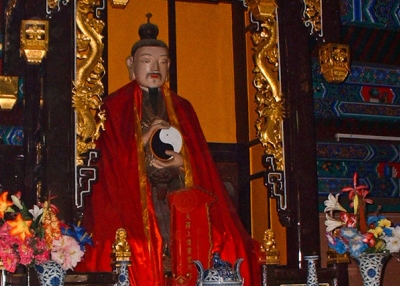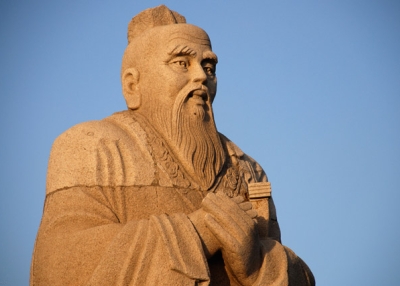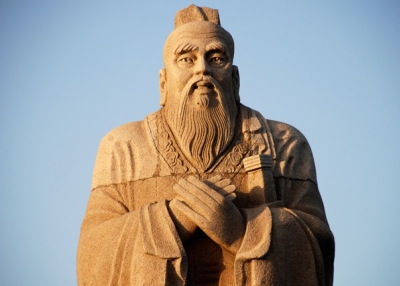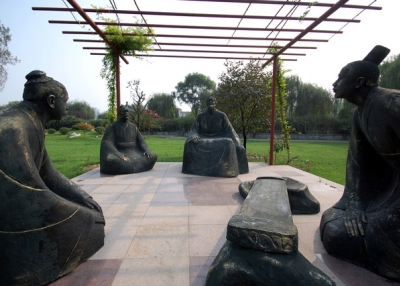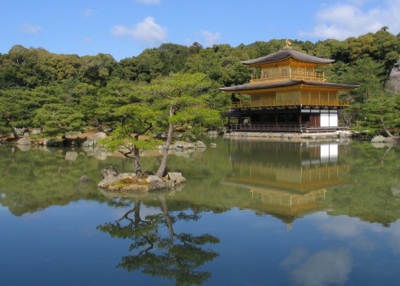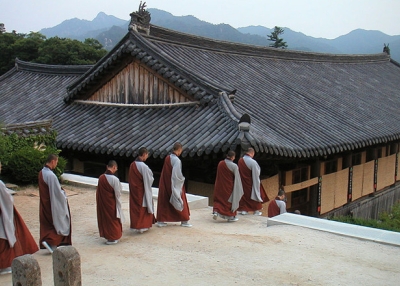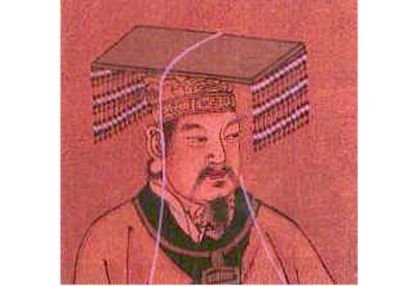The Three Teachings

By Chris Livaccari
March 2010
I recently had occasion to reflect on the construction of the image and legacy of Confucius while talking with Dr. Agnes Hsu of New York's China Institute, where there is currently a fantastic exhibition on Confucianism. (If you are in NYC, I encourage you to pay a visit.)
There is an enduring significance of Confucianism in East Asian culture, and its intersections with Daoism and Buddhism, collectively known as the "three teachings" of Chinese tradition. Confucianism's emphasis on modesty and humility is something that I have always loved about Chinese culture, and it lends a kind of ritualistic elegance to doing business in China. This can be frustrating, infuriating, and confusing, but also wonderfully clear and well-structured, depending on your degree of patience and familiarity with the system. Most foreigners who arrive in China will hear the expression 有朋自远方来,不亦乐乎 ? (Isn't it pleasurable to have friends come from afar?) This is straight out of The Analects, so next time you're in China being banqueted and gifted to death, remember who started all this!
For me, the kind of guest-host culture so valorized in Confucian culture has felt very personal and familiar, and it took me a while to figure out exactly why this is so. My first stay in China was in the city of Yantai in Shandong province, a place with a relatively small number of foreigners. I taught at a small college owned by what was then China's Coal Ministry. On the other side of a small village not far from our Coal College was the much larger Yantai University, which had a contingent of foreign teachers, at that time almost exclusively Christian missionaries from the American South. My Chinese friends tried very hard to introduce me to and help me become friends with my "country fellows" (as they often translated the term 老乡 into English), but I just couldn't help thinking that these "other Americans" were much more strange to me than my Chinese friends. In fact, when I went to my Chinese friends' homes and visited their families, I felt almost as if I had been transported back to my Sicilian-American family in New York. That was it! I gradually discovered that what made Chinese culture seem so familiar and comfortable to me is that its Confucian family dynamic and guest-host culture was remarkably similar to the Old World Italian culture that somehow had persisted in my Americanized family. Trying to relate to Southerners whose culture revolved around the Bible and pot-luck parties was completely alien to me. But huge, loud dinners with extended family and non-negotiable bonds of family and friendship was something I knew intimately and lived with all my life. Thanks for that, Confucius!
So: family, friendship, and social duty--check. But what about our environment and the world around us? Of course, in the time of Confucius, people were not actively destroying the planet with carbon emissions, so there was nothing like the kind of environmental crisis we now face. In general, Confucians are pretty silent about the natural world, just as they are about the supernatural world, and they tend to focus squarely on the social realm. People, of course, still had to think about nature, and that's where Daoism came in. Confucianism simply could not exist on its own as a comprehensive philosophical system for traditional China. I still remember my first encounter with Daoism, when I read a line from Laozi about "the highest good" being like water (上善若水) and the notion that water is both the weakest and at the same time most powerful substance on earth. Like Confucianism, in Daoism the emphasis is on not boasting and "putting all your cards on the table," so to speak. Rather, the consistency of the Confucian view of the social world--the true gentleman or junzi does not insist on recognition, and the Daoist view of the natural world--there are forces in nature powerful beyond our perception and one should never go against nature, have truly made these two complementary philosophies throughout Chinese history.
There is certainly one other area of human life that seems to be missing from the Confucian-Daoist synthesis that characterized Chinese thought before the introduction of Buddhism in the Han Dynasty, probably around the first century of the Common Era. This has to do with the metaphysical and existential concerns of Buddhism, some of which were also addressed in early Daoism. Whereas Daoism focused a lot on nature and "going with the flow," Buddhism delved into the nature of existence, suffering, death, and rebirth--important and extremely compelling concepts for anybody living on earth. Buddhism was initially understood by the Chinese as a form of Daoism, and there were even some spurious scriptures circulated that talked of the Daoist sage Laozi crossing the mountains to convert the "barbarians" of South Asia to Buddhism. Gradually, however, the deep insights of Buddhism into these existential and spiritual concerns made it the fundamental third tradition in traditional Chinese philosophy. The Buddhist concept of sunyata or "emptiness" (空 in Chinese) was interpreted as either a world of illusory experiences with a deeper truth behind, or as a world in which every experience was read as open to interpretation and understanding relative to a multiplicity of other phenomena and experiences. The concept of pratityasamutpada or "interdependent causation" (缘起 in Chinese) spoke of a world in which every phenomena was related and dependent upon every other. This all sounds remarkably twentieth-century, and there has been no shortage of comparisons between these ideas and quantum mechanics, relativity, existentialism, Heideggerian, and Wittgensteinian philosophy. Whatever the validity of such comparisons, there is simply no doubt that these ideas are some of the most powerful in the cultural and intellectual history of the world.
As time went on, Daoism and Buddhism were eventually harmonized and synthesized in the teachings of the Chan or Zen school, staring with the Tang dynasty text of the Platform Sutra of the Sixth Patriarch (六祖壇经). The fundamental point here, of course, is that Confucianism could not exist without Daoism and Buddhism, and East Asian religion and philosophy have been characterized by their syncretic nature throughout history. Europe and the Middle East could certainly have taken a lesson here in its conflicts among Paganism, Christianity, Judaism, and Islam. While Confucianism was often understood as an orthodoxy, over the long scope of history, it was more often seen as part of this larger whole formed by the "three teachings." And just as this should be a lesson for Western religion, it should also be one for our teaching of language. While debates continue about various "methods" of language instruction, it is clear that there is no one approach that accomplishes everything that needs to happen in the foreign language classroom. Communicative approaches, kinesthetic and physical approaches, and even old-school grammar translation strategies have their appropriateness and efficacy. The American philosopher Richard Rorty talked about a tradition of "liberal irony" that reflected a kind of pragmatic and holistic attitude toward knowledge, and I think we should bring that same syncretic spirit to our teaching methodologies.

